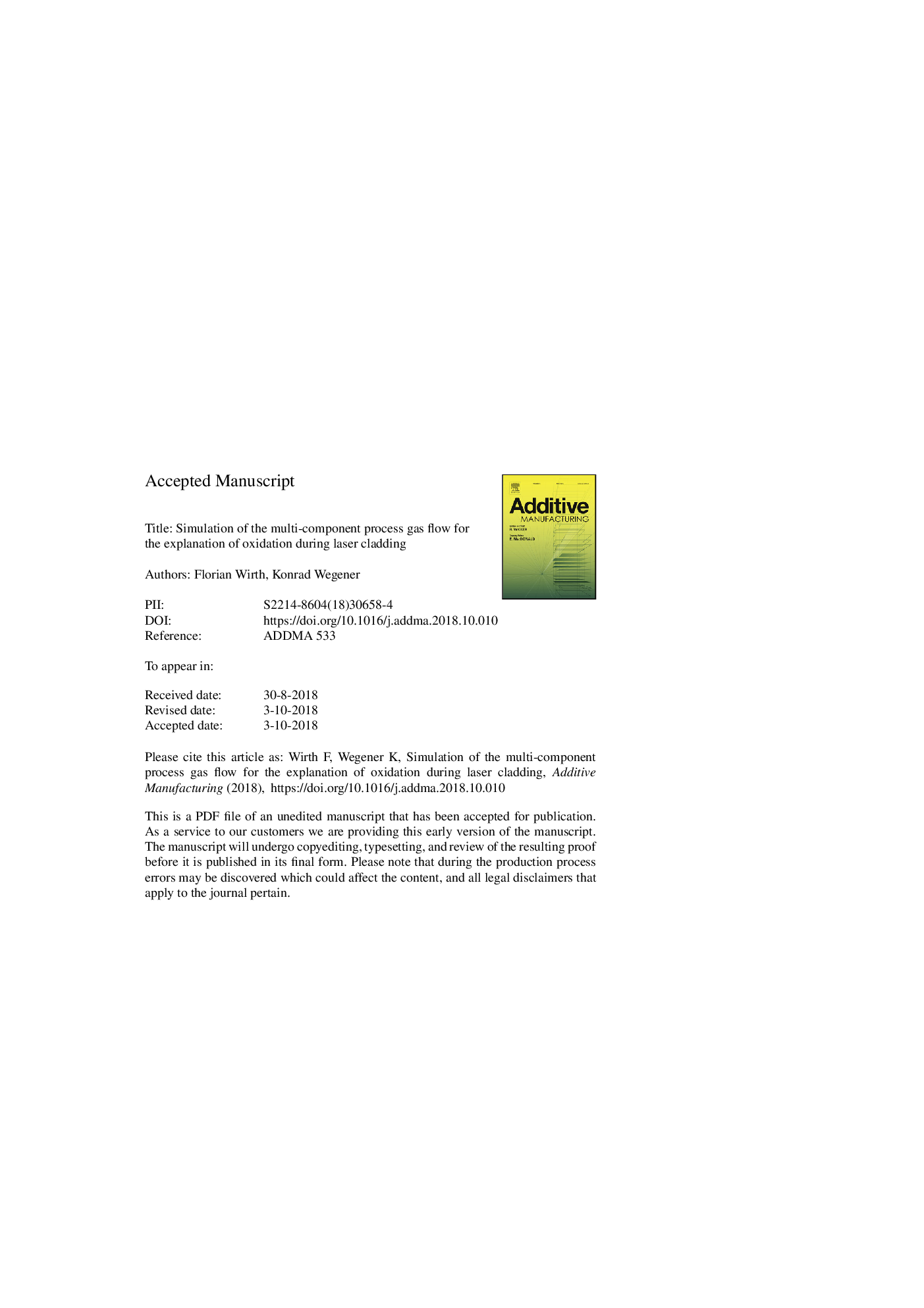| کد مقاله | کد نشریه | سال انتشار | مقاله انگلیسی | نسخه تمام متن |
|---|---|---|---|---|
| 11027750 | 1666161 | 2018 | 23 صفحه PDF | دانلود رایگان |
عنوان انگلیسی مقاله ISI
Simulation of the multi-component process gas flow for the explanation of oxidation during laser cladding
ترجمه فارسی عنوان
شبیه سازی جریان چند جزء گاز فرآیند برای توضیح اکسیداسیون در حین تابش لیزر
دانلود مقاله + سفارش ترجمه
دانلود مقاله ISI انگلیسی
رایگان برای ایرانیان
کلمات کلیدی
روکش فلزی لیزری، رسوب مستقیم فلز، نازل پودر، جریان گاز فرآیند، اکسیداسیون،
ترجمه چکیده
معمولا جریان جریان گاز فرآیند و انواع فرایند گاز به عنوان پارامترهای اصلی فرآیند فرایند پوشش روی لیزر در نظر گرفته نمی شوند. در اینجا نشان داده شده است که چگونه می توان میزان اکسیداسیون سطح استخر ذوب را با تغییر نوع گاز حامل، با کاهش جریان جریان گاز حامل و تغییرات جزئی در طراحی نازل پودر کاهش داد. با این حال، جذب می تواند به طور همزمان تا 15٪ کاهش یابد. یک مدل شبیه سازی برای جریان گاز و جریان ذرات پودر بین نازل پودر و سطح استخر ذوب توسعه یافته است، که نشان می دهد درصد حجم گاز های مختلف و بنابراین کیفیت گاز جو سپر. علاوه بر این، توزیع ذرات پودر و ضعف پرتو لیزر توسط ذرات پودر می تواند شبیه سازی شود. نتایج شبیه سازی با اندازه گیری درصد درصد اکسیژن در سطح کار تهیه شده توسط تصاویر آزمایشی سرعت بالا از سطح استخر ذوب و اندازه گیری جذب نشان داده شده توسط اندازه گیری های آزمایشگاهی توزیع چگالی ذرات پودر در سطح کارایی تایید شده است. اثر اکسیداسیون در فرآیند.
موضوعات مرتبط
مهندسی و علوم پایه
سایر رشته های مهندسی
مهندسی صنعتی و تولید
چکیده انگلیسی
Usually the process gas flow rates and the process gas types are not regarded as the primary process parameters of the laser cladding process. Herein it is shown, how the melt pool surface oxidation can be significantly reduced by the change of the carrier gas type, by a reduced carrier gas flow rate and by minor changes in the powder nozzle design. However, the absorptivity may decrease concurrently by up to 15%. A simulation model for the gas flow and the powder particle flow between the powder nozzle and the melt pool surface has been developed, which reveals the volume percentage of different gas types and so the quality of the shield gas atmosphere. Additionally, the powder particle distribution and the attenuation of the laser beam by the powder particles can be simulated. The simulation results are confirmed by experimental measurements of the powder particle density distribution in the working plane, by measurements of the oxygen volume percentage at the workpiece surface, by high-speed camera images of the melt pool surface and by absorptivity measurements, which show the effect of oxidation on the process.
ناشر
Database: Elsevier - ScienceDirect (ساینس دایرکت)
Journal: Additive Manufacturing - Volume 24, December 2018, Pages 249-256
Journal: Additive Manufacturing - Volume 24, December 2018, Pages 249-256
نویسندگان
Florian Wirth, Konrad Wegener,
